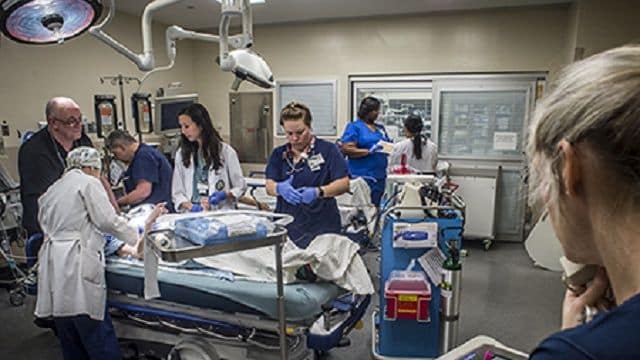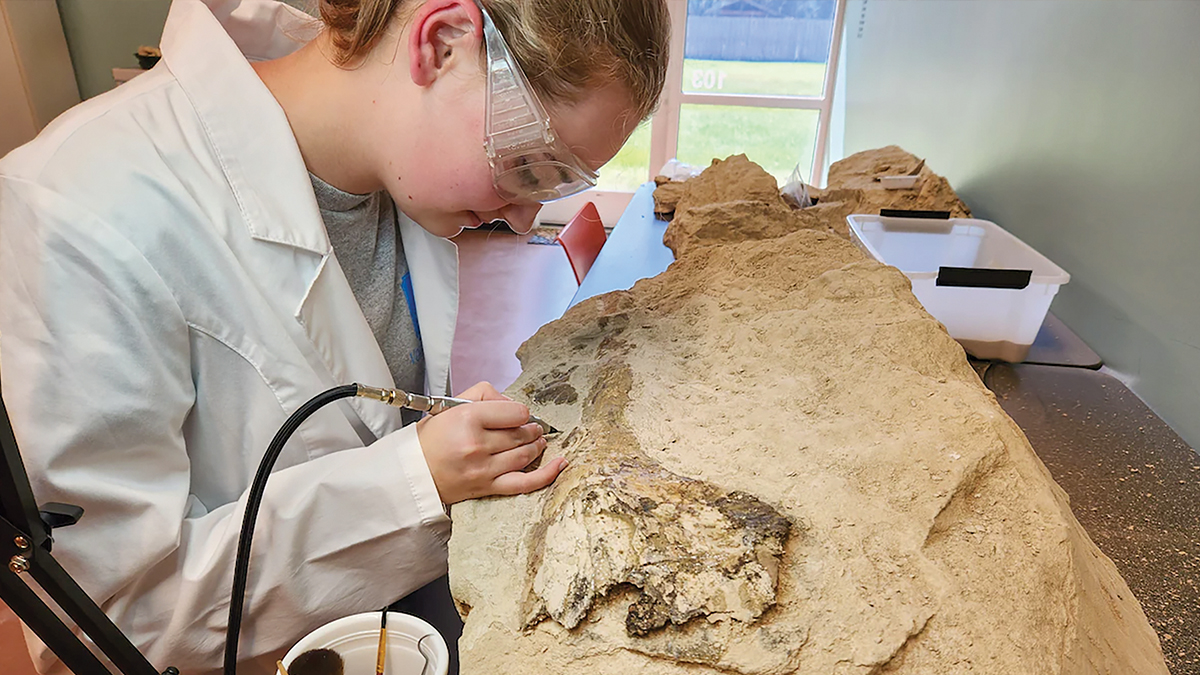COVID-19 is not the only health threat in town

Trauma centers are not as busy as usual, but injuries from falls and acts of violence are rising. Here, UAB Emergency Department staff treat patients in the trauma bay of the ER. (UAB)
For months, COVID-19 has dominated the news and the national psyche.
But the many other aches, pains, ailments and injuries that afflict people have not gone away. Every day, folks get sick and injured, and seek help through the health care system.
May is National Trauma Awareness Month, designated by the American Trauma Society, and the news from the world of trauma amid the ongoing pandemic is mixed.
The good news: there are fewer trauma cases at major trauma centers such as the University of Alabama at Birmingham. But the statistics aren’t all rosy.
“The number of trauma cases we are seeing now are down some 10-12 percent from last year,” said Dr. Jeffrey Kerby, Ph.D., director of the Division of Acute Care Surgery in the UAB Department of Surgery, part of the School of Medicine. “The numbers that are not dropping are falls, especially with the elderly, and gunshot wounds.”
At some trauma centers around the nation, falls, and particularly falls by the elderly, make up about 80 percent of patient visits, Kerby said.
“We don’t see as many falls at UAB, but the volume is going up,” he said. “Unfortunately, gunshot wounds and assaults are holding steady or even growing.”
According to the Birmingham Regional Emergency Medical Services System, the number of patients to which the BREMSS trauma system responded in Jefferson County dropped from 381 in March and April 2019 to 339 in March and April this year. Injuries to pedestrians did not drop, and penetrating injuries, such as from bullet or knife wounds, went up — 103 during March and April this year, compared to 100 in those months a year ago.
“People are driving less but walking more, so it’s not surprising to see a drop in vehicle crashes while pedestrian injuries hold steady,” Kerby said. “There are a lot of people out walking, running and biking in my neighborhood. I know I drive a bit slower now as a result.”
Trauma cases that result from violence trouble Kerby. “It is discouraging to see the numbers of patients from violence increase, especially as we continue to cope with the pandemic and people remain tense and on edge,” Kerby said. “At the UAB Trauma Center, we can save about 97 percent of the gunshot victims who make it to the hospital alive. I just wish we saw fewer victims of violence in our community.”
Kerby has advice as states reopen and society begins to return to a more normal setting.
“We don’t need to see a rash of injuries as we open up — from people overcompensating as they are released from stay-at-home orders,” he said. “We need to be careful, to have awareness of our situations and to think.
“We’ve all had a lot of angst and concern over the pandemic. As we ease back into more normal life, we need to also ease back into our usual routines and avoid injuries. I think a lot of people are going to be pushing the envelope, trying to make up for activities or projects that were put on hold by the pandemic. That’s a good way to find yourself in a trauma center.”
Kerby says he doesn’t expect Americans to celebrate National Trauma Awareness Month. But he does hope that people take a moment to think and try to avoid becoming a trauma statistic.
This story originally appeared on the University of Alabama at Birmingham’s UAB News website.





